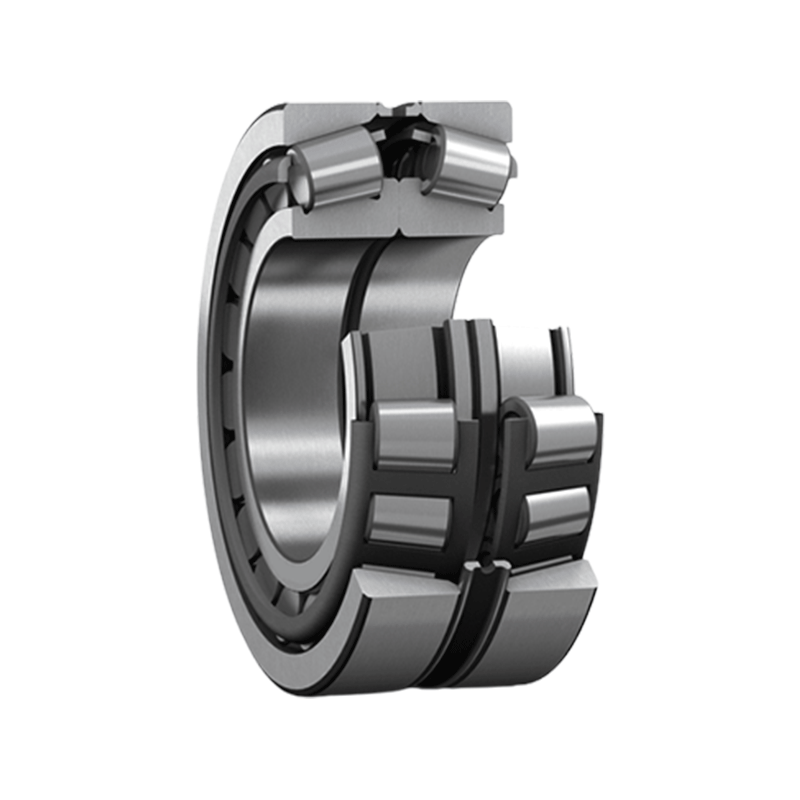Proper alignment is crucial for the performance and efficiency of engineering machinery bearings for several reasons:
Reduced Wear and Tear: Proper alignment is paramount for minimizing wear and tear on the intricate components of engineering machinery bearings. When machinery operates with misaligned bearings, it often leads to localized stress concentrations, accelerating the deterioration of surfaces. This accelerated wear can compromise the structural integrity of the bearings, necessitating premature replacements and inflating overall maintenance costs. Engineers and maintenance professionals need to prioritize meticulous alignment procedures to ensure optimal performance and durability.
Extended Bearing Life: The significance of proper alignment becomes even more pronounced when considering the potential extension of bearing life. Correct alignment practices contribute substantially to the longevity of bearings. By ensuring that loads are distributed uniformly, the bearing experiences more balanced stress, mitigating the risk of fatigue failure and extending its operational life. This is particularly critical in applications where reliability is non-negotiable, and minimizing downtime and replacement costs is a primary concern.
Optimized Load Distribution: The meticulous attention to proper alignment pays dividends in optimizing load distribution across the bearing surfaces. Engineers need to grasp the intricate details of how misalignment can result in uneven loading, creating hotspots and areas of excessive stress. Proper alignment facilitates a more uniform distribution of loads, preventing overloading on specific points. This enhancement in load-carrying capacity is pivotal for machinery subjected to high loads, where preventing premature failure due to uneven stresses is a constant priority.
Reduced Heat Generation: The relationship between alignment and heat generation is a critical aspect that engineers must thoroughly comprehend. Misalignment introduces uneven friction, leading to heightened heat generation. This heat can, in turn, jeopardize the efficiency and functionality of bearings. Engineers need to delve into the intricacies of how proper alignment minimizes frictional losses, contributing significantly to the machinery's efficient operation. This is especially pertinent in applications where thermal management is a make-or-break factor in preventing overheating and thermal-induced damage.
Improved Energy Efficiency: The interplay between proper alignment and energy efficiency is a nuanced concept that demands careful consideration. Bearings operating under optimal alignment conditions exhibit lower levels of frictional resistance. Engineers must understand that this reduction in friction translates to tangible improvements in energy efficiency. This is of paramount importance in applications where energy consumption is a significant operational cost. Proper alignment becomes a strategic imperative for engineers aiming to optimize the overall sustainability and cost-effectiveness of the machinery.
Mitigation of Vibration and Noise: The correlation between alignment and undesirable effects such as vibrations and noise requires a comprehensive understanding. Engineers need to grasp how misalignment can amplify vibrations and noise levels, negatively impacting the operational environment. Proper alignment serves as a potent countermeasure, minimizing these undesirable effects and fostering a quieter, smoother, and more controlled operational environment. This becomes especially crucial in applications where precision and low noise levels are not just desirable but are integral operational requirements.
Improved Sealing Performance: Sealing mechanisms are a critical line of defense against external contaminants. Engineers must grasp how misalignment can compromise the effectiveness of seals, rendering the bearings vulnerable to environmental elements. Proper alignment is essential for ensuring that seals function optimally, enhancing the overall protection and longevity of the bearings. This level of detail is especially crucial in applications where environmental factors pose a constant threat to the machinery.
Double Row Tapered Roller Bearings

Improved Sealing Performance: Sealing mechanisms are a critical line of defense against external contaminants. Engineers must grasp how misalignment can compromise the effectiveness of seals, rendering the bearings vulnerable to environmental elements. Proper alignment is essential for ensuring that seals function optimally, enhancing the overall protection and longevity of the bearings. This level of detail is especially crucial in applications where environmental factors pose a constant threat to the machinery.
Double Row Tapered Roller Bearings



 English
English Deutsch
Deutsch























